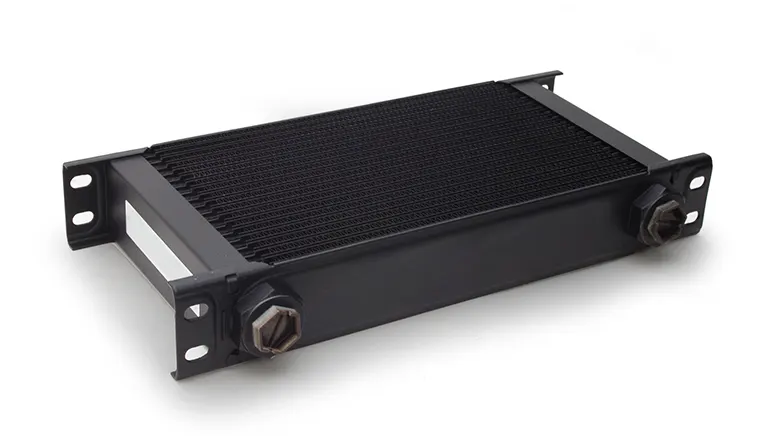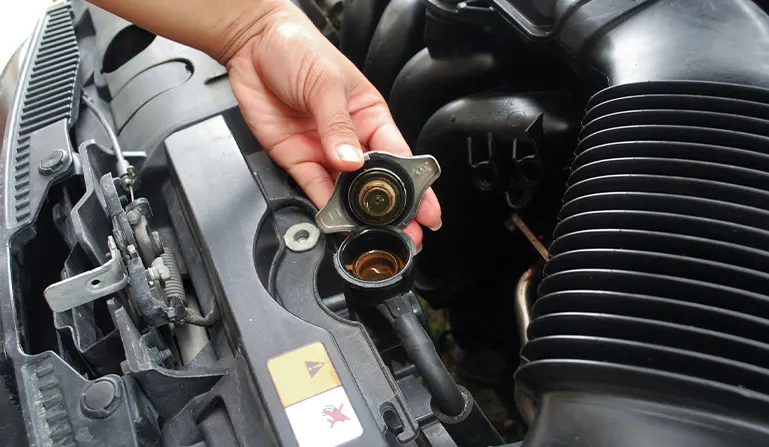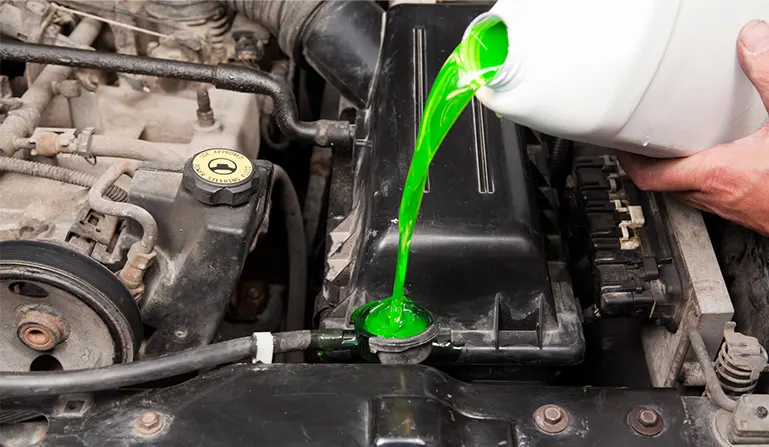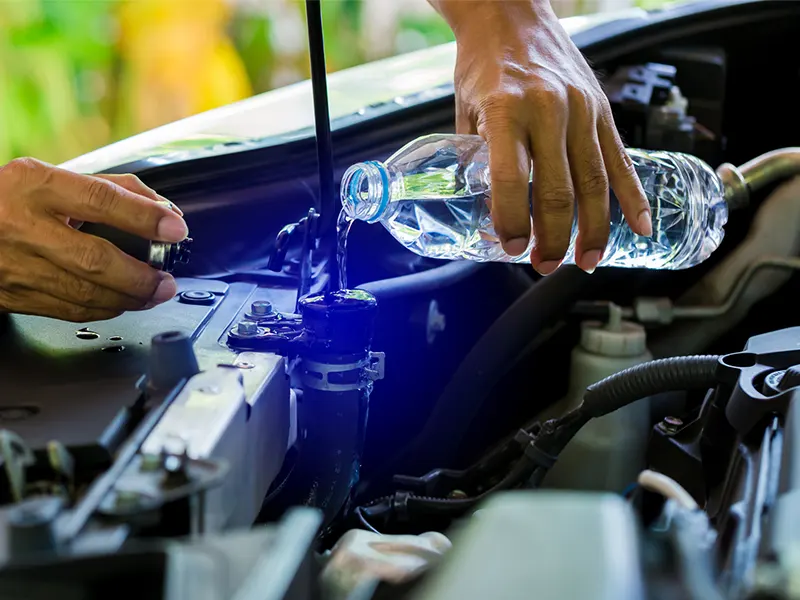Have you ever been stranded in the middle of nowhere with no coolant in your radiator? Water might just be the lifesaver you need!
In any case, you need to know a few things before using water in the radiator. So keep reading to get to know more!
Can I use water in the radiator?
Yes, you can use water in the radiator, but it’s not recommended for long-term use. Water can provide a temporary solution for cooling the engine in urgent situations; however, it lacks the anti-freeze and anti-corrosive properties of a proper coolant, which are crucial for maintaining the radiator and engine’s optimal condition. Using water consistently may lead to rusting and scaling inside the radiator, potentially causing damage and reducing the efficiency of the cooling system.
For optimal performance and longevity of the vehicle’s cooling system, it is advisable to use a mixture of water and antifreeze, adhering to the manufacturer’s recommended ratio, which typically provides enhanced cooling, anti-freeze, and anti-corrosive properties.
The images in the below section show how a car radiator looks like and how it is located.


What type of water I can use?
For radiator use, it’s advisable to utilize distilled or deionized water. Distilled and deionized water are free from minerals and contaminants that are typically present in tap water, which can lead to sediment buildup and corrosion within the radiator and cooling system.
The absence of minerals in distilled and deionized water helps prevent the formation of scale and deposits inside the cooling system, thereby maintaining optimal heat dissipation and preventing overheating.
While tap water can be used in emergency situations, consistently using distilled or deionized water mixed with antifreeze in the recommended ratio ensures the longevity and efficient performance of the vehicle’s cooling system.
Always prioritize using high-quality water to safeguard the radiator and entire cooling system from potential damage and inefficiency.
How to use water in my radiator?
- If you run out of coolant down the road, make sure to pull over the vehicle into a safe place.
- Let the engine cool down for a while.
- You should not open the coolant reservoir cap when the engine is hot, because hot coolant can sputter unexpectedly.
- Using a thick piece of cloth carefully open the reservoir cap half way through. Allow the pressure to release before removing the cap completely.
- Then add water up to the fill line.
- Close the reservoir cap and make sure it is properly sealed.
What to do next?
Low coolant level can harm your engine and Other components in the vehicle. The first thing you should do is to get the vehicle checked by a professional mechanic to find out the cause of low coolant level.
If the cause was a leak, get it repaired immediately by a mechanic. Also, get the radiator flushed out before filling it with new fluid.
What are the pros and cons of using water?
As mentioned before, water is a lifesaver even if it comes to your car engine. However, there are pros and cons of using water in your radiator.
- Enhances corrosion: Natural water contains several types of minerals. When you use water, it can deposit in the cooling system that can lead to corrosion.
- Water does not provide protection over extreme weather conditions: Water does not have a low freezing point and a higher boiling point. That means, if the temperature is below 32 F (0 C), it freezes. As a result, it can crack the engine block and if it is above 212 F (100 C) water boils up. Therefore, water cannot prevent the engine from overheating under extreme weather conditions.
- Does not provide lubrication: Unlike coolant, water does not have any lubricating properties to keep the cooling system lubricated.
What does an engine coolant do?
In comparison to water, coolant or an antifreeze is the best option you have. It comes in various illuminous colors like the traditional green one, or pink and blue. An engine coolant absorbs the heat generated by the engine.
The ingredients in the coolant such as ethylene glycol have a low freezing point and a higher boiling point. Therefore, the coolant does not get freeze when it is cold. During the summer, it does not boil.
Additionally, coolant has other additives such as corrosion inhibitors. They protect the cooling systems from corrosion over time.

What is flushing?
Flushing the radiator involves cleaning the cooling system by running water or a specialized cleaning agent through it to remove accumulated sediment, rust, and contaminants. This process is vital for maintaining the optimal performance of the vehicle’s cooling system.
Over time, the radiator and cooling system can accumulate deposits that hinder the efficient flow and heat dissipation of the coolant, potentially leading to overheating and engine damage.
By flushing the radiator, you ensure that the cooling system is clean and efficient, promoting optimal coolant flow and preventing the engine from overheating. It’s advisable to adhere to the vehicle manufacturer’s guidelines regarding the frequency of radiator flushing to maintain a well-functioning cooling system and prolong the lifespan of the engine.
Conclusion
Navigating through the complexities of using water in a car radiator, this article provides a thorough guide for emergency situations on the road. It emphasizes that while water can be a temporary solution for cooling an engine, it lacks the crucial anti-freeze and anti-corrosive properties of a proper coolant, which are vital for maintaining the radiator and engine in optimal condition. The article also sheds light on the types of water suitable for radiator use, the step-by-step method to use water in a radiator, and the subsequent actions needed to ensure the vehicle’s health.
For a deeper dive into maintaining various car parts and understanding automotive intricacies, explore more articles on the CarFinite Blog.

John Smith, a Los Angeles-based car specialist and automotive writer, boasts over 20 years in the industry. With a background as a master technician and a decade-long writing stint at notable automotive publications, John now shares his expansive knowledge on CarFinite, simplifying car maintenance for readers.

